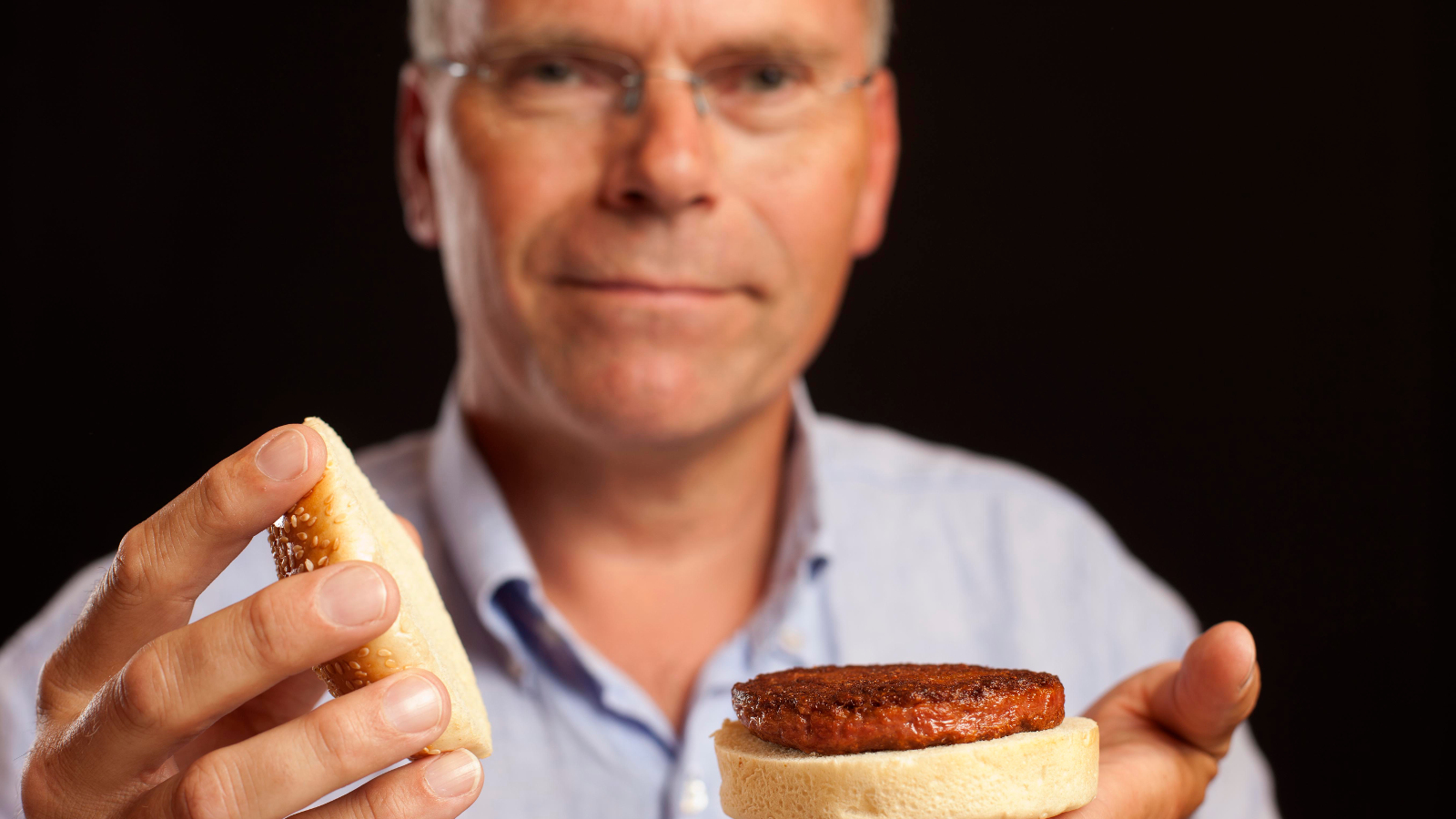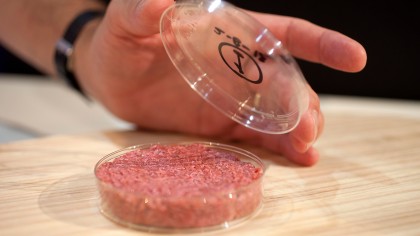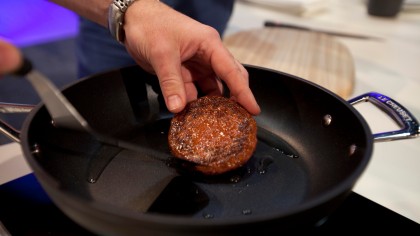Food for thought: would you eat a lab-made burger if it could save the world?
The benefits and challenges for cultured meat

Imagine you're faced with two hamburgers. They look identical - and then you're told that one was grown in a lab, and the other was created using standard practices. It'd be a pretty easy decision over which to eat, right?
Well, what if you were then told the lab-grown burger (known as 'cultured meat') could help save the planet, improve animal welfare, and maybe even extend your lifespan?
According to experts, the way we currently farm livestock is seriously damaging the environment and putting the health of humans and animals at risk. Growing cultured meat in a lab environment is being touted as the solution to these problems, and there are lots of signs it could become a viable food source within a decade.
But before it's a long way from being the solution some are vaunting it as - there are some serious challenges to overcome.
Is lab-made meat real?
It was only in 2013 that the first cultured meat burger was grown in a lab. Professor Mark Post took stem cells from the shoulder of a cow and then grew 20,000 strands of muscle to produce enough meat to form a burger - and the process took three months and cost £220,000. (Around $320,000 / AU$450,000).
"The benefits are a smaller carbon footprint, less greenhouse gas emissions, less resources (vegetable proteins) required and animal welfare benefits," Prof. Post told techradar. "We imagine that the total number of cows [needed to provide the world's meat] comes down from 1.5 billion to 30,000."

That statistic alone is enough to impress many, but there are problems to overcome. Professor Post sees "scaling up [production] and getting regulatory approval" as the main challenges. And that's before getting to the questions most meat-eaters would have: what about taste, nutrition, and price?
Sign up for breaking news, reviews, opinion, top tech deals, and more.
"Eventually the tissue will be the same as current meat products, so nutrition and taste will be equal. We are not quite there yet though," says Prof. Post. "Price is still high and the initial product will be expensive, ten times more expensive than now."
However, he imagines it might only take another couple of years after release for cultured meat to reach parity with farmed meat on price, assuming projections are matched and people actually buy it.
Why is it so expensive?
The first cultured beef burger was largely funded by Google co-founder, Sergey Brin, and a lot of the headlines focused on the fact that, at £220,000, it was the world's most expensive burger.
However, focusing on that price might be missing the point on something that could offer multiple benefits; consider that the average cost for a new medicine to be developed right now is £1.2 billion, according to the Office of Health Economics.
There are also multiple new avenues beyond just replacing burgers. Memphis Meats recently unveiled its first lab-grown meatball and estimated the cost of one pound of ground beef at $18,000. But, what's being overlooked when we focus on the high costs of cultured meat production, is the cost of the farmed livestock we rely upon at the moment.
Animal farming currently uses almost one third of all the land in the world that isn't covered in ice. A full 70% of the land that's actually fit for agriculture is covered in crops to be fed to animals. Animal farming uses 8% of the global water supply and produces 18% of the world's greenhouse gases.

Cultured meat production could achieve the same output with 55% of the energy, 1% of the land, 4% of the water, and it would produce just 4 percent of the greenhouse gas emissions, according to the study, Environmental Impacts of Cultured Meat Production.
"The price of the meat we eat just now will only go up as time goes on and the price of cultured meat can only come down," Isha Datar, CEO of New Harvest, told techradar.
New Harvest is a non-profit organisation whose goal is to stimulate a new economy of animal products made without animals.
It's helped fund research into cultured steak at King's College London, and been instrumental in starting companies like MuuFri, which produces milk without cows, Clara Foods, which produces egg whites without hens, and Pembient, which is making rhino horns without the need to kill rhinos to try to circumvent the illegal wildlife trade.
Saving the world
Animal welfare and environmental concerns may be the main driving forces behind cultured meat, but there are also significant health issues to consider.
"In terms of public health problems associated with meat production, people think of heart disease," Datar told us, "But what's more frightening is the uncontrollable epidemic viruses that emerge from farming animals close to humans, the outbreak of food-borne illness, and the issue of antibiotic resistance."
The meat industry is prone to disaster. Many will remember the mad cow disease and foot and mouth outbreaks in the UK in recent years which prompted panic and mass slaughters. Even more recently the avian flu outbreak led to mass culls of chickens.
"It's difficult to contain disease with these huge animal populations," explains Datar. "The problem becomes - how do you kill these animals fast enough?"
Then there's the risk of being poisoned by the meat we eat. Multiple studies, such as this one from Consumer Reports, reveal potentially dangerous bacteria levels in meat through faecal matter contamination. All 458 pounds of beef it examined was contaminated.
"The sterile conditions cultured meat is grown in are much safer than the conditions under which meat is produced now," says Datar.

Cultured meat also doesn't need to be pumped full of antibiotics. There are growing concerns about the over-use of antibiotics in animal farming and the potential impact it may be having on human resistance. Antibiotics have rapidly extended our life expectancy; resistance could reverse that trend.